Canon EOS 7D Mark II Nauticam
Nauticam NA-7DMKII Housing for Canon EOS 7D Mark II
NOT LONGER IN PRODUCTION

It Is clearly true that the NA-7DMKII is an improvement over the original NA-7D housing, but Nauticam has come so astonishingly far in the last 5 years that this really is not a useful comparison. The NA-7D was an important housing for Nauticam (see the sidebar about that), but Nauticam SLR housings have advanced considerably. Take for example the housing latches. The NA-7D was the last Nauticam housing to use the “old school” stainless steel buckle style latches. The NA-7DMKII takes advantage of the simple yet secure locking latches that have since become famous. These latches are more secure, effortless to close, and eliminate the knuckle busting snap of the old buckles. The NA-7DMKII represents the ideal example of current Nauticam housing design.
Nauticam’s patented Port Locking Lever is as simple to operate as ever, enabling easy port changes without twisting or excessive force. A vacuum reset button inside the port mount also allows the vacuum system to be quickly reset from the port mount making quick lens changes a snap. These touches further reduce the stress of proper gear preparation and allow more time for diving.
Added to these now standard features are ergonomic refinements that further enhance the imaging experience for both still photo and motion imaging enthusiasts. A new dual function lever under the right handle brings ISO and M Fn (used for AF area pattern) out to the fingertips of the user. Nauticam’s signature multi selector pad, found on the Nikon line and NA-70D, provides easy access to all 65 focus points and the ability to move on the diagonals without stair stepping. All of the core functions needed to operate the camera are at the users fingertips, and available by feel.
The NA-7DMKII is the most refined Nauticam SLR housing to date. Every camera function is made easier by careful thought and design, aided by input from photographers who will actually use this camera. The housing borrows the best from recent housings like the NA-D810 and the NA-5DMKIII, and incorporates new enhancements to key exposure controls for both video and still photo users.
New to the Nauticam housings for Canon SLR’s, the NA-7DMKII will feature a lever to activate or deactivate the camera’s popup flash. While this task can be accomplished in the Canon menus, it is easier and faster to disable or enable flash with this lever.
The APS-C Advantage
What is it about the APS-C sensor size that makes it so ideal for underwater photographer, especially as compared to the 36x24mm full frame sensors? Simply put, it’s lenses. First, for macro, the APS-C yields more “reach” with a given macro lens, and more choices; in particular the Canon EF-S 60mm macro which does not work on Canon’s full frame cameras. The fully kitted macro shooter with the 7DII might have 3 macro lenses, the aforementioned 60mm, the Canon 100m f/2.8 IS L macro, and the Sigma 150mm f/2.8 macro. That is an impressive choice in macro lenses and, by adding a close-up converter lens like the Nauticam Super Macro Converter (SMC), covers the entire spectrum of the macro world, from fish portraiture to the tiny world of super macro.
For fisheye wide angle lenses, APS-C again offers advantages, specifically two of the best and most versatile wide angle lenses available for use underwater. The Tokina 10-17mm is a favorite among underwater photographers, and for good reason. When used on an APS-C camera, this a super-wide 180º fisheye at 10mm, but when zoomed to 17mm the fisheye distortion is greatly reduced and the lens becomes excellent for close-focus-wide-angle or more distant subjects with a 110º fov. The Canon 8-15, used with it’s APS-C range of 10-15mm, is very similar in it’s versatility and produces even sharper images with less aberration.
For rectilinear wide angle, again, the APS-C sensor provides an advantage, this time due to dome port optics. As full frame shooters are aware, it can be a challenge to get sharp corners when using a wide angle rectilinear lens like the Canon 16-35mm. For APS-C, Canon offers the much less expensive 10-22mm and 10-18mm lenses. When these are used with a large dome like the Nauticam 8.5” acrylic dome or the Nauticam 230mm glass dome it is considerably easier to get sharp images, especially in the corners.
Integrated Vacuum Check and Leak Detection System
The Nauticam vacuum check and leak detection system is available with NA-7DMKII as standard equipment.
Combined with an optional vacuum valve, this monitoring system provides constant updates on the water tight and safe to dive status of the housing. A simple coded LED lighting system lets the user know that the vacuum is solid, or that the housing is losing vacuum. Leak detection is built into the same circuit, so if there is water intrusion, an audible and visual indication will occur. The NA-7DMKII ships with a 3rd bulkhead port specifically for installing optional vacuum valves, leaving the user two other bulkhead ports for HDMI, sync cables and other accessories.
Viewfinders
Precision requires vision: A high resolution camera like the Canon 7D MkII demands perfect focus for optimal results. Fortunately, Nauticam has developed the most user-friendly interchangeable viewfinders available.
The standard optical glass viewfinder is very good and travel friendly, but many photographers prefer the ease of a magnified viewfinder with adjustable diopter. Nauticam produces a “straight” 180º enlarging viewfinder and a 45º angled enlarging viewfinder to enhance the ease of close quarters work often associated with macro shooting. Both viewfinders have high quality optics, and allow bright viewing of the entire image. A patented external dioptric adjustment allows personal adjustment to a sharp-as-a-tack standard underwater and viewfinder changes can be executed in less than 30 seconds without using tools. Exceptional composition and focus accuracy have never been more accessible.
TECHNICAL SPECIFICATIONS
- Depth Rating: 100m
- Weight: 2.73kg
- Dimensions: 353mm (W) × 192mm (H) × 134mm (D)
- Port Opening: N120






























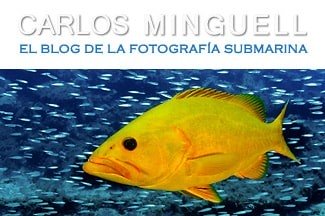









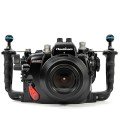

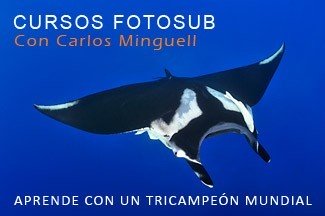


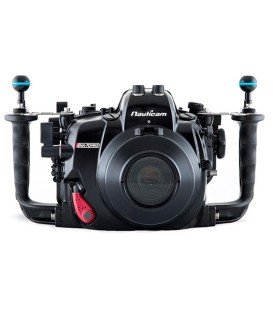

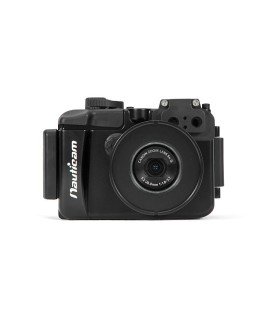
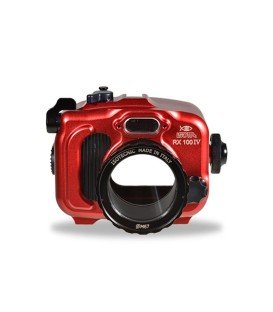
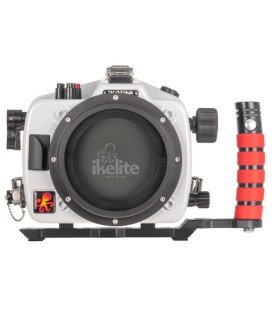
Get Social